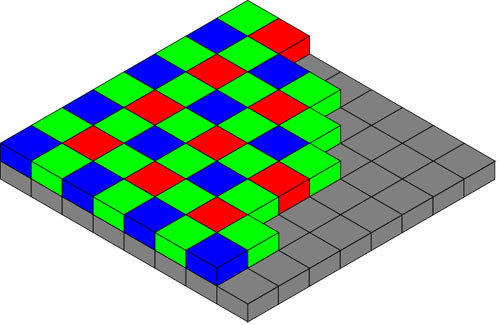Bryce Bayer, Kodak scientist who created ubiquitous Bayer Filter for color digital imaging, has passed away
posted Tuesday, November 20, 2012 at 6:06 PM EDT

Bryce Bayer, the Eastman Kodak scientist who invented a now ubiquitous color filter for digital photography that bears his name, has passed away. Bayer, 83, died on November 13th in Bath, Maine.
Known as the Bayer Filter, Bayer's invention is still used in nearly every digital camera, video camera and camera phone on the market today. The Bayer Filter array was patented in 1976 (U.S. Patent No. 3,971,065) and features a checkerboard arrangement of red, green, blue filters that enable a single CCD or CMOS imaging sensor to capture color images.
The three color filters in Bayer's array are needed to create color from the greyscale image information that's captured by the imaging chip. Prior to Bayer's invention, three separate sensors attached to a beam splitter were required to capture a color image but that set-up was too large and expensive to find mass appeal.
Bayer's more economical array is designed to mimic how the human eye perceives color, with a filter pattern of 25% red, 50% green, and 25% blue, which is typically known as RGB. (The extra green pixels are because the luminance channel of the human visual system is centered in the green portion of the spectrum, and it's the luminance signal that contributes most to our perception of detail.) The color filters are fabricated directly on top of the light-sensitive pixels in the image sensor as it's manufactured.

An image captured with a Bayer-filter camera is known as a Bayer pattern image. This raw sensor output must then be interpolated using demosaicing algorithms for the sensor to produce an accurate image, with full red, green, and blue image data for every pixel.
Along with his color imaging work, Bayer developed key algorithms for storing, enhancing, and printing digital images.
Bayer retired from Kodak in the 1990s after a long career at the company. We salute Bryce Bayer for his huge contribution to digital imaging; a significant portion of the entire human population benefits from his invention every day. We offer sincere condolences to his family.